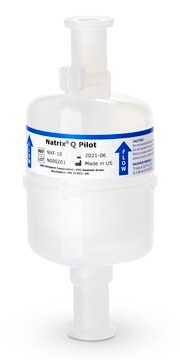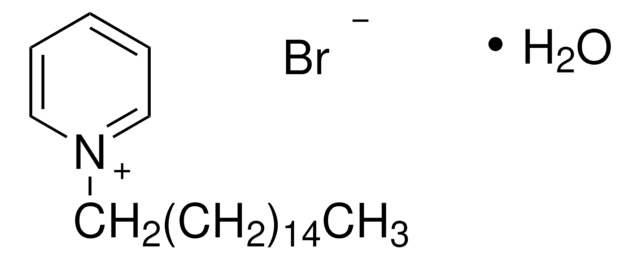C100307
Cyclohexane
Laboratory Reagent, ≥99.8%
About This Item
Produits recommandés
Qualité
Laboratory Reagent
Niveau de qualité
Densité de vapeur
2.9 (vs air)
Pression de vapeur
168.8 mmHg ( 37.7 °C)
77 mmHg ( 20 °C)
Essai
≥99.8%
Forme
liquid
Température d'inflammation spontanée
500 °F
Limite d'explosivité
9 %
dilution
(for analytical testing)
Résidus d'évap.
≤0.005%
Indice de réfraction
n20/D 1.426 (lit.)
pb
80.7 °C (lit.)
Pf
4-7 °C (lit.)
Solubilité
ethanol: miscible(lit.)
water: insoluble(lit.)
Densité
0.779 g/mL at 25 °C (lit.)
Chaîne SMILES
C1CCCCC1
InChI
1S/C6H12/c1-2-4-6-5-3-1/h1-6H2
Clé InChI
XDTMQSROBMDMFD-UHFFFAOYSA-N
Vous recherchez des produits similaires ? Visite Guide de comparaison des produits
Catégories apparentées
Description générale
Application
- Direct Extraction and Determination of Free Nicotine: Highlights the use of cyclohexane as a solvent in the analytical processes for detecting harmful substances in environmental samples(Li et al., 2024).
Autres remarques
Mention d'avertissement
Danger
Mentions de danger
Conseils de prudence
Classification des risques
Aquatic Acute 1 - Aquatic Chronic 1 - Asp. Tox. 1 - Flam. Liq. 2 - Skin Irrit. 2 - STOT SE 3
Organes cibles
Central nervous system
Code de la classe de stockage
3 - Flammable liquids
Classe de danger pour l'eau (WGK)
WGK 2
Point d'éclair (°F)
-4.0 °F - closed cup
Point d'éclair (°C)
-20 °C - closed cup
Faites votre choix parmi les versions les plus récentes :
Déjà en possession de ce produit ?
Retrouvez la documentation relative aux produits que vous avez récemment achetés dans la Bibliothèque de documents.
Les clients ont également consulté
Notre équipe de scientifiques dispose d'une expérience dans tous les secteurs de la recherche, notamment en sciences de la vie, science des matériaux, synthèse chimique, chromatographie, analyse et dans de nombreux autres domaines..
Contacter notre Service technique









